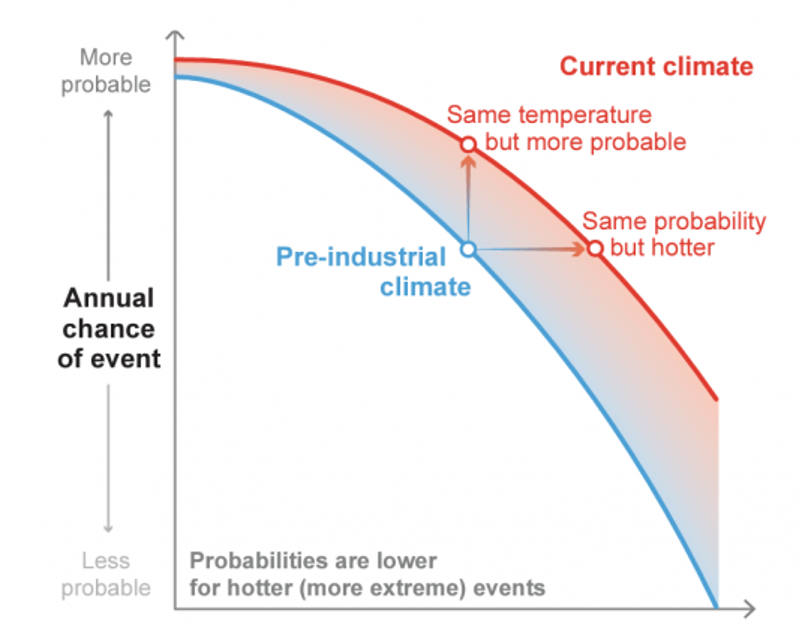Trends in climate, both in the past and in the present and the future, must always be understood in the context of the natural variation. In this case, "climate variability" refers to how weather conditions (like temperature and rainfall) change from year to year within their normal "range of variability." This natural change can be caused by the almost random internal variability of the coupled atmosphere-ocean-land-ice system as a whole (as weather variability is drawn out over many years). The El Niño–Southern Oscillation is a good example of this type of cause because it makes the weather change. All of these natural factors, both internal and external, are summed up by the term "internal climate variability." This internal climate change is always there, though sometimes it's stronger than other times. Climatology has to be thought of as a mean with a lot of variation around it. Variability can be very big from year to year (like at high latitudes), or it can be small in a few places and for some variables (i.e., temperatures in the tropics).
 Figure 1: Changes in climate result in changes in the magnitude and probability of extremes, illustrated here for hot events (Source: AR6 WG1, Chapter 11) .
Figure 1: Changes in climate result in changes in the magnitude and probability of extremes, illustrated here for hot events (Source: AR6 WG1, Chapter 11) .
In contrast to natural variability, human emissions of greenhouse gases and the resulting changes in atmospheric concentrations (i.e., CO2, methane) along with changes in the land surface and aerosol have a different effect on the climate system. When people look for signs of climate change, they try to separate their effects from the natural variation in the background. This signal can be seen as changes in the size of the fluctuations or as a steady trend over time.
The Climate Change Knowledge Portal has three themes that can help you understand how variability, trends and the importance of change over the last 70, 50 and 30 years. The information on this data sources comes from the ERA5 reanalysis, which is used at a resolution of 0.5º x 0.5º to get information about daily changes.
IPCC, 2021: Climate Change 2021: The Physical Science Basis. Contribution of Working Group I to the Sixth Assessment Report of the Intergovernmental Panel on Climate Change [Masson-Delmotte, V., P. Zhai, A. Pirani, S.L. Connors, C. Péan, S. Berger, N. Caud, Y. Chen, L. Goldfarb, M.I. Gomis, M. Huang, K. Leitzell, E. Lonnoy, J.B.R.Matthews, T.K. Maycock, T. Waterfield, O. Yelekçi, R. Yu, and B. Zhou (eds.)]. Cambridge University Press, Cambridge, United Kingdom and New York, NY, USA, 2391 pp. doi:10.1017/9781009157896.
This website was produced with the support of the United States Agency for International Development (USAID) under the terms of USAID's Research for Decision Makers (RDM) Activity cooperative agreement no. AID-388-A-17-00006
Views expressed herein do not necessarily reflect the views of the U.S. Government or USAID. icddr,b is also grateful to the Governments of Bangladesh, Canada, Sweden and the UK for providing unrestricted/institutional support
68, Shaheed Tajuddin Ahmed Sarani Mohakhali, Dhaka 1212, Bangladesh
icddr,b is located at the Mohakhali area in Dhaka, just ask your driver for the "Cholera Hospital"
